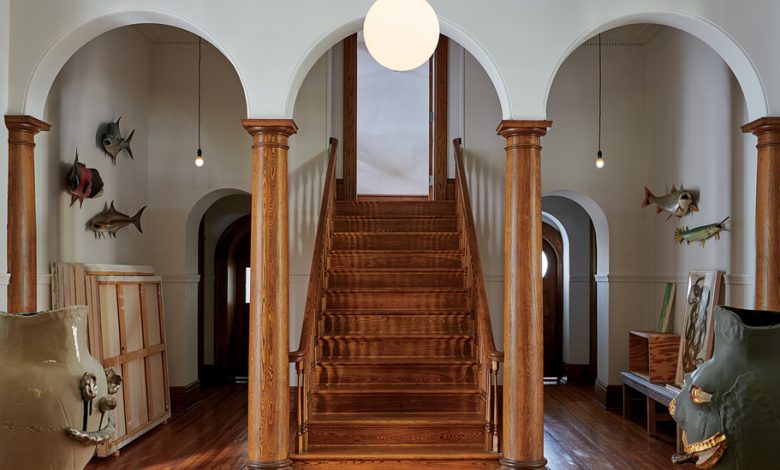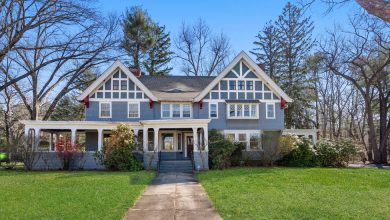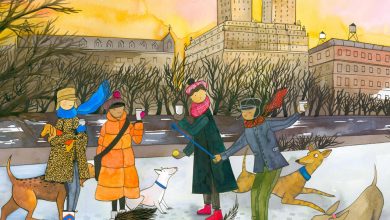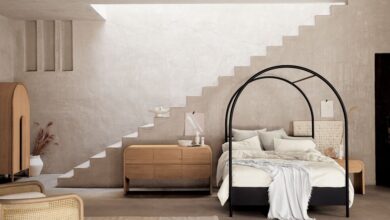In a Reimagined Victorian Schoolhouse, an Artist Finds His Third Act

[ad_1]
DAN McCARTHY HAD just become the resident of a stately Victorian schoolhouse at the foot of the Catskill Mountains when he realized that a building, like a person, lives multiple lives. In 2014, when he was 52 and in what he refers to as “the end of act two,” the artist packed up his apartment of nearly 30 years in Williamsburg, Brooklyn, and set out for a new life a few hours north of Manhattan in a three-story, Romanesque stone structure with an impressive Dutch gable and panoramic views of the Hudson Valley. The move, though overwhelming, brought immediate relief. Ceramics had given McCarthy’s career a welcome jolt — two months before he left the city, Anton Kern, his gallerist at the time, had shown a series of his expressive clay vessel Facepots — but sales for his crudely rendered oil paintings weren’t what they had been in the 1990s; what he fantasized about most was escaping New York’s market-driven art scene.
“I wasn’t a hot young thing anymore,” says McCarthy, now 59, on an early December afternoon as he sets down a plate of Humboldt Fog cheese in an open kitchen whose earthy warmth belies the fact that it was once a classroom. In the adjoining dining area, light streaks through diaphanous denim curtains, onto which he’s drawn gridlike patterns with bleach from a mustard dispenser, a nod to the noren he’d seen at the temple in Los Angeles where his Japanese American mother used to take him and his two younger sisters as children. Nearby, in an airy living room, a rock sculpture by the Swiss artist Ugo Rondinone and a daybed inspired by Donald Judd and fabricated with marine-grade fir plywood add to the space’s meditative mood. “I moved to New York to become famous,” he says. “But at a certain point, I realized that the greatest thing would be freedom. … Disconnecting from the city was about disconnecting from who I was there.” (Tellingly, one of his home’s only reminders of New York — framed strips of photo booth self-portraits by Andy Warhol, torn from an auction catalog — are down in the basement with his two kilns.)
If McCarthy was ready for his third act when he arrived upstate, perhaps the house was, too. Built in 1899 as a gift to the community by Lysander Lawrence, a rich New Yorker who spent summers with his wife at the neighboring Catskill Mountain House, the elementary school opened its doors in 1901 and remained in operation until 1977. Shortly after McCarthy moved in, but before he’d gotten around to planting trees in the front yard, the property was, he says, “really accessible”; strangers used to show up unannounced asking for a tour, curious to see what had become of their former classrooms.
The roughly 9,200-square-foot manor — symmetrical and severe, as if Wes Anderson had reinterpreted the Overlook Hotel — was showing signs of neglect by the time the jewelry designer Steven Kretchmer acquired it in the 1990s. Kretchmer replaced the arched windows and pivoting portholes, many of which had been smashed by vandals; installed new red oak floors; and restored the chalkboards that wrap around the dining room and punctuate the second-floor living room. He also preserved the heavy wooden doors that open from those common areas onto a grand hall, the echoing heart of the house, with a cathedral ceiling stained dark auburn that extends beyond the original cornice to a height of 26 feet.
That’s where, atop a network of tables and crates, McCarthy displays what he calls his “greatest hits”: pots painted bright yellow, topped with ornamental birds or tiny anthropomorphic teacups, standing on four little legs, bound by rope and pinched and puckered and painted and glazed and gooped. What each of them has in common is an inscrutable smile, a motif McCarthy first explored as a student at the San Francisco Art Institute in the 1980s, when, he says, he was firing “Picassoid slab pots with weird faces,” and one he revisited when he took up ceramics again during the summer of 2012 at the University of California, Davis. “I should put a face on them or something,” he recalls thinking at the time. “I tried to resist that impulse, but as soon as I did it, I knew that’s what I wanted to do.”
Following Kretchmer’s death in a motorcycle accident in 2006, his daughter, Claudia, inherited the place and later sold it to McCarthy. He was staying with friends down the road when he noticed a real estate sign in front of the schoolhouse, which looked, he says, “oddly foreboding and magical.” In a way, it offered the artist everything New York no longer could: quiet, an opportunity for reinvention and a jolt of adventure. “At the beginning, I made a conscious effort not to shower for weeks,” he says, citing Huck Finn as an inspiration. “I wanted to go completely feral.” At one point, he invited over a “spiritual person” who told him, “‘That man you bought the house from? He did this all for you. And now it’s your turn.’ She was telling me that I didn’t really own this house, that I was just in it for a while.”
SO LONG AS he remains here, McCarthy is determined to make the place his own. Although much of the building’s restoration was finished well before he moved in, his influence is nonetheless felt in subtle personal touches: on a windowsill, a set of rough-hewn cinched candlesticks that resemble a pair of Paleolithic bonbons made by his girlfriend, the ceramist and former art director Paula Greif; on a rubber-topped dining table with sawhorse legs that McCarthy constructed out of a solid-core door, elemental wheel-thrown vessels by a hero of his, the American potter Robert Turner. Almost everything in McCarthy’s home once belonged to someone else — or was once something else entirely — and that’s the point: In all of it, there’s the promise of renewal, from the ornate mosaic urn made from broken teacups by the New York-based artist Joan Bankemper to the mismatched chairs he picked up at sidewalk sales and antique shops in Hudson that now surround his dining table.
McCarthy paints on the ground floor. (He sleeps on the second floor, one story up, but keeps a small, monastic bedroom next to his studio for when he works late into the night.) In a way, his workshop serves as a memorial to his idyllic, sun-kissed first act, the souvenirs of which he’s preserved. Taxidermy fish that he found online decorate the space, reminding him of his time working on fishing boats as a teenager in the late ’70s. In an eastern-facing room, where the morning light washes his art with a rosy glow, acrylic paintings stretched onto half-moon canvases resemble psychedelic rainbows, many of them with simple phrases evocative of people and places from his youth: “the Damned” (a band), “the Starwood” (a rock venue) and “Infinity Surfboards” (a shop). “These were the paintings I made when I first moved here,” he says. “Maybe it was a way to reach back to a time when I felt comfortable and safe.” Against the opposite wall are 18 of his newest paintings, which he spent the past two years finishing. On those canvases, people dance naked, their arms outstretched in fits of ecstasy, oblivious to the rainbows flowing directly into their heads.
As he reaches the bottom of the stairs leading into a whitewashed basement, he pauses in front of a monumental display of beaming Facepots, ranging in height from 18 to 22 inches: row upon row of creations that appear alternately, and somehow all at once, dopey, surprised, malevolent, sarcastic, sanguine, joyful and downright deranged. They feel, he says, however we want them to feel, or maybe how we’re feeling ourselves. “The mood varies from pot to pot,” he says over the clanking of the boiler. “They go out into the world, and they occur to people in different ways. We’re the ones who make them ours and fill them with meaning. They’re just vessels, after all.” The same, of course, can be said for the rooms that surround us.
[ad_2]
Source link






